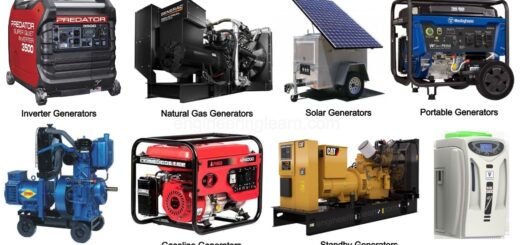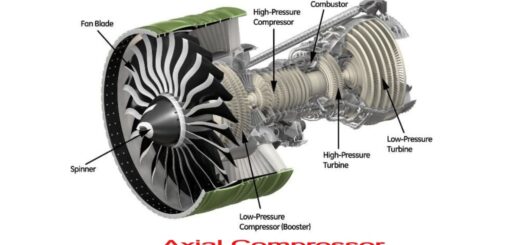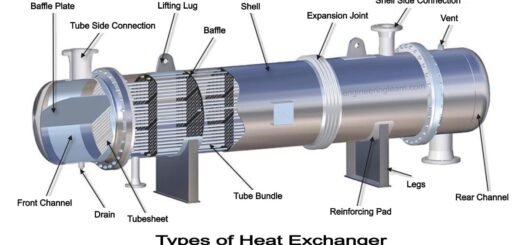6 Types of Agitators – Functions, Components, Configurations [Difference between Agitators and Mixers]
![6 Types of Agitators - Functions, Components, Configurations [Difference between Agitators and Mixers]](https://engineeringlearn.com/wp-content/uploads/2022/12/Agitators-1024x539.jpg)
What are Agitators?
6 Types of Agitators – Functions, Components, Configurations [Difference between Agitators and Mixers]: – An agitator is a mechanical gadget that aids in shaking or blending a fluid or combination of fluids. Agitators are generally utilized for numerous tasks in the compound, drug, food, oil, metal extraction, paint, glue, water, and restorative businesses.
Functions of Agitators
- To get a proper blending of fluids.
- To advance chemical reaction inside the equipment.
- To increase heat transfer during heating or cooling
- To keep homogeneous fluid mass during storage.
- To scatter immiscible fluids.
- To keep the product in a blended state till utilized.
- To mix miscible fluids.
- To dissolve certain solids into the fluid.
Components of Agitators
A) Motor Component
The motor drives the agitator get-together. It produces the required force to instigate flow and shear to the media to a controlled degree. The power prerequisite of an agitator relies upon many factors, for example,
- Consistency, explicit gravity, and strong content of the media
- Speed or rpm of the impeller
- Impeller width
- Power number of the impeller
- Number of impellers
B) Impeller Component
The impeller is considered the most basic part of agitators that decide the stream design, proficiency of the homogenizing system, and blending parameters. It is responsible for applying energy straightforwardly to the materials being mixed.
C) Shaft Part
The shaft is connected to the motor’s driveshaft and communicates the torque to the impeller. Couplings, end covers, and different gadgets are utilized to fabricate the shaft assembly. Sealing’s are likewise used to forestall material development.
Difference Between Agitators and Mixers
The terms “agitators” and “mixers” are frequently utilized reciprocally, yet they do not mean exactly the same thing. Mixers are the hardware that quickly mixes at least two components together. These components might be of the equivalent or various stages (e.g., strong fluid, fluid, gas-fluid). At the point when a component enters a mixer, it is frequently in a “pure” state and leaves combined with different components. Then again, agitators keep up with homogeneity and harmony in an existing combination. They forestall the development of concentration and temperature gradients and ensure uniform consistency in a mixture.
Types of Agitators
- Paddle Agitators
- Propeller-type agitators
- Blade-type agitators
- Turbine-type agitators
- Anchor-type agitators
- Helical Agitators
1. Paddle Agitators: ( Types of Agitators )
Containing paddle-formed sharp edges, these agitators are the most fundamental types of agitators. Their ability is restricted and utilized principally for laminar stream liquids requiring little shearing. They are flexible and contain an equal number of forwarding and reversing paddles to move ingredients from one end of the vessel to the next.
A changed form of paddle agitators is Sawtooth Paddle Agitators. The forward puddles of such Agitators or instigators contain scores or saw teeth.
2. Propeller Agitators: ( Types of Agitators )
Functions like homogenization, suspension, and scattering are effectively accomplished utilizing propeller-type agitators working at medium to high speeds. Propeller agitators are profoundly reasonable for low viscosity products. These axial flow agitators are ideal for solid in fluid suspensions as they forestall the testimony of strong particles.
3. Blade Agitators: ( Types of Agitators )
These are suitable for low and medium-consistency liquids. blade type agitators are pivotal types.
4. Turbine Agitators: ( Types of Agitators )
For emulsification and scattering of liquids at extremely rapid speed, Turbine agitators are utilized widely. Turbine Agitators are described by highly powerful blending capacity across an expansive viscosity range. Turbine agitators have an axial input and outspread result. They consolidate rotation and radial movement during working.
5. Anchor Agitators: ( Types of Agitators )
Anchor agitators have impellers that look like the shape of an anchor. They normally have a U-shape that matches the form of the tank. They generate a predominantly tangential flow pattern, but angled blades can be incorporated into their horizontal supports to create an axial flow.Their name demonstrates or indicates the impeller shape that looks like an anchor.
6. Helical Agitators: ( Types of Agitators )
As the blades are organized in a design of a helix, they are known as helical agitators. Appearing like a threaded screw, helical agitators are axial flow agitators that give vigorous movement inside the vessel or tank. This sort of agitator is generally utilized in polymer industries.
Selection Criteria of Industrial Agitators
The selection of Agitators for a specific application relies upon different variables mentioned below:-
- The phase to be mixed (single-phase or multiphase).
- The viscosity of the bulk.
- Definite capacity required (mixing, dissolving, scattering, heat trade, compound response, crystallization, emulsification, suspension, and so on).
- The blending cycle (batch size, the time required for agitation, material expansion succession, Properties of the materials to be mixed).
- Initial ingredient and final product viscosity.
- Solubility of solids and concentration used.
- Desired process outcomes.
- Corrosive or flammable properties.
Configurations of Agitators
The sorts or we can say types of agitators in light of their configuration and design when it is installed in a blending tank are mentioned below:-
A) Top Entry Agitators
Top entry agitators are installed above the fluid level, normally at the center line of a baffled vessel. They may be installed with a point offset with the vertical to suspend solids in the solution effectively. They are suitable for fixed tanks and can be attached by plate mount or spine mount. Their design and position permit simple dismantling and cleaning.
The top entry is the most widely recognized configuration found in industrial blending.
B) Bottom Entry Agitators
Bottom entry agitators are installed at the lower part of the tank. They have a short shaft that is directed associated with the engine’s driveshaft. Bottom entry agitators are utilized for blending the materials which will more often than not settle at the tank base. They are normally utilized in large volume tanks.
C) Side Entry Agitators
Side entry agitators are installed or introduced on the sidewall of a tank. They are utilized when the width of the tank is a lot more prominent than the liquid level. They are likewise utilized in tanks with low ceiling clearance, which doesn’t allow permission for the installation of a top-entry agitator. Be that as it may, less consistent blending is accomplished on the grounds that the fluid is moved along the dividers of the tank. The fluid content must be drawn during maintenance. The power requirement of side entry agitators is also higher than top entry agitators.
Conclusion
Agitators are utilized in a variety of industrial processes, for example, for carrying out a chemical reaction, blending tasks, filtration, for drying, for heat exchange, and so on. The agitators can take care of such a wide varieties of utilization since there are a variety of impellers that come in various shapes and sizes. Since they have such a wide assortment of purposes, the agitators are utilized in a large number of enterprises, for example, substance, process, food, drugs, beauty care products, metal extractions, ink, paint ,and so on.













